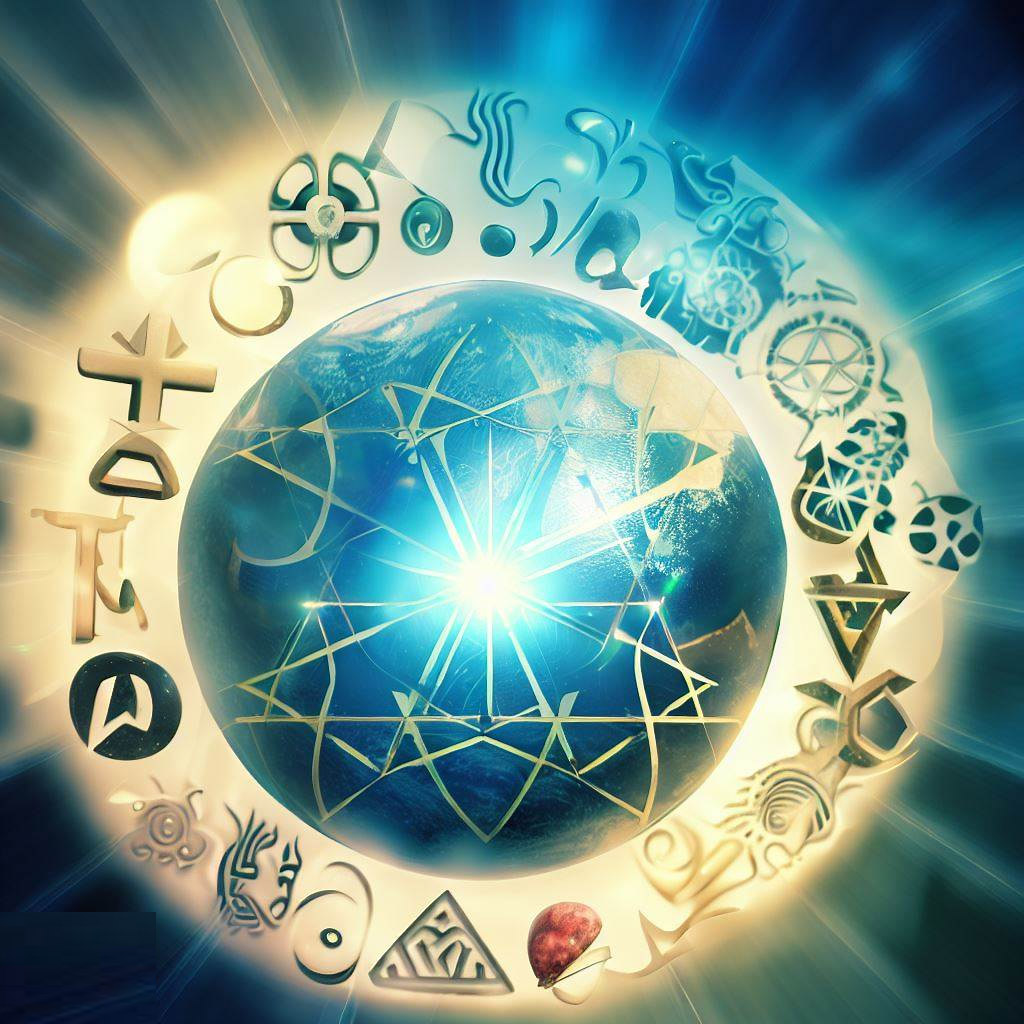
Global Spiritual Symbols: Their Meaning & Influence
Introduction
Across the world, spiritual symbols have served as repositories of faith, belief, and wisdom. These divine symbols embody complex ideologies and philosophies, encapsulating the intricate web of the human psyche, the cosmos, and the divine. In this comprehensive piece, we venture into an exploration of the most significant spiritual symbols worldwide, and delve into their historical origins, interpretations, and meanings. We'll discover the profound influence these holy emblems have had on art, literature, and everyday life.
The objective is not only to inform but to encourage a thought-provoking dialogue, illuminating interfaith and cross-cultural perspectives on these symbols. Scholars, students, and inquisitive minds alike will find this enlightening discourse valuable, offering a wealth of knowledge on the rich tapestry of spiritual symbols that resonate across cultures and continents.
I. Understanding Global Spiritual Symbols
1. The Cross - Christianity
Arguably the most universally recognized religious icon, the Cross is central to Christianity. Its origins can be traced back to the crucifixion of Jesus Christ, a pivotal event etched in Christian lore. Today, the Cross stands as a testament to Christ's sacrificial love, symbolizing salvation and redemption.
A testament to its influence, the Cross has transcended religious spaces, making its way into art, fashion, and literature. Salvador Dali’s "Christ of Saint John of the Cross" and the cross-shaped pendant are apt examples of this permeation.
2. Om – Hinduism
Om, a sacred insignia in Hinduism, is more than just a symbol. It's believed to be the primordial sound of the universe, encapsulating the essence of the cosmos and the divine. Originating from the ancient Indian scriptures called the Vedas, Om signifies the divine energy, or 'Shakti,' and its three main characteristics: creation, preservation, and destruction.
The Om symbol's influence extends beyond Hinduism, permeating Buddhist and Jain rituals and philosophies. Moreover, the symbol has found prominence in yoga and meditation practices worldwide, underscoring its universal appeal.
3. Yin Yang – Taoism
The Yin Yang, an integral part of Taoism, is a beautiful representation of the interconnectedness and interdependence of opposites. Originating from ancient Chinese philosophy, it symbolizes harmony, balance, and the cyclical nature of the universe.
The Yin Yang has significantly impacted not only religious practices but also traditional Chinese medicine, martial arts, and Feng Shui. Its presence in modern designs, logos, and tattoos demonstrates its enduring global influence.
II. Cross-Cultural Analysis of Spiritual Symbols
Analyzing spiritual symbols across cultures reveals intriguing parallels and stark differences. For instance, both the Cross in Christianity and Om in Hinduism represent the concept of the divine, yet they originate from distinctly different theological premises.
Conversely, symbols like the Lotus, found both in Hinduism and Buddhism, share similar interpretations. In both religions, the Lotus symbolizes purity and spiritual awakening, demonstrating how certain spiritual symbols can resonate similarly across different faiths.
III. Interpreting Spiritual Symbols: A Contemporary Lens
Interpretation and meanings of global spiritual symbols continue to evolve. They are no longer limited to religious or spiritual contexts but have permeated popular culture, often taking on secular meanings.
The Om symbol's inclusion in yoga and meditation practices has been instrumental in promoting mental wellness, while the Yin Yang symbol's use in branding often denotes balance and harmony, a desirable trait in many products and services.
IV. The Influence of Spiritual Symbols on Society
The impact of these sacred emblems on society cannot be overstated. They are reflected and revered in various forms – art, literature, music, architecture, and even fashion.
For instance, the Star of David, a symbol of Judaism, is prominently featured in synagogues and Jewish ceremonial art. Meanwhile, Islamic architecture frequently showcases the Crescent Moon and Star, significant Islamic symbols. This inclusion of religious symbols in societal elements affirms their importance and the sense of identity and unity they foster among their followers.
V. Interfaith Perspectives on Spiritual Symbols
In a diverse, global society, understanding the significance of spiritual symbols from different faiths is crucial. It promotes mutual respect, tolerance, and peaceful coexistence. For example, the Dharma Wheel, a sacred emblem in Buddhism, is also recognized and respected by Hindu and Jain communities, demonstrating a shared historical and cultural heritage.
The interfaith dialogue fostered by these symbols is a testament to their capacity to transcend religious boundaries, promoting universal values like peace, unity, and respect for all life.
VI. Spiritual Symbols in the Arts and Literature
The arts and literature serve as fertile ground where spiritual symbols flourish, both in traditional and contemporary contexts. Christian symbology permeates the works of literary giants like William Shakespeare and Dante Alighieri. Similarly, artists such as Michelangelo and Leonardo Da Vinci have produced timeless masterpieces featuring religious icons.
In contemporary culture, these symbols have not lost their appeal. Modern authors and artists continue to incorporate these spiritual icons into their works, using them to explore themes of faith, identity, and the human condition.
Conclusion: The Everlasting Resonance of Spiritual Symbols
The exploration of the most influential spiritual symbols across cultures reveals their indelible mark on human civilization. These divine symbols and holy emblems, with their rich histories and profound meanings, continue to inspire, guide, and shape societies.
From the humble confines of sacred texts to the vast expanse of the cosmos, spiritual symbols are both a mirror and a compass. They reflect our shared yearnings for understanding, purpose, and connection while guiding us towards our higher selves. In the words of Swiss psychiatrist and psychoanalyst, Carl Jung, "Symbols, by their very nature, could not have it any other way. One must go in search of oneself, and the method one uses to proceed will eventually lead one to the discovery of oneself."
By embracing the wisdom of these sacred symbols, we can foster a spirit of unity and mutual respect, paving the way for a more inclusive, compassionate, and spiritually enriched global society.
Society Culture



